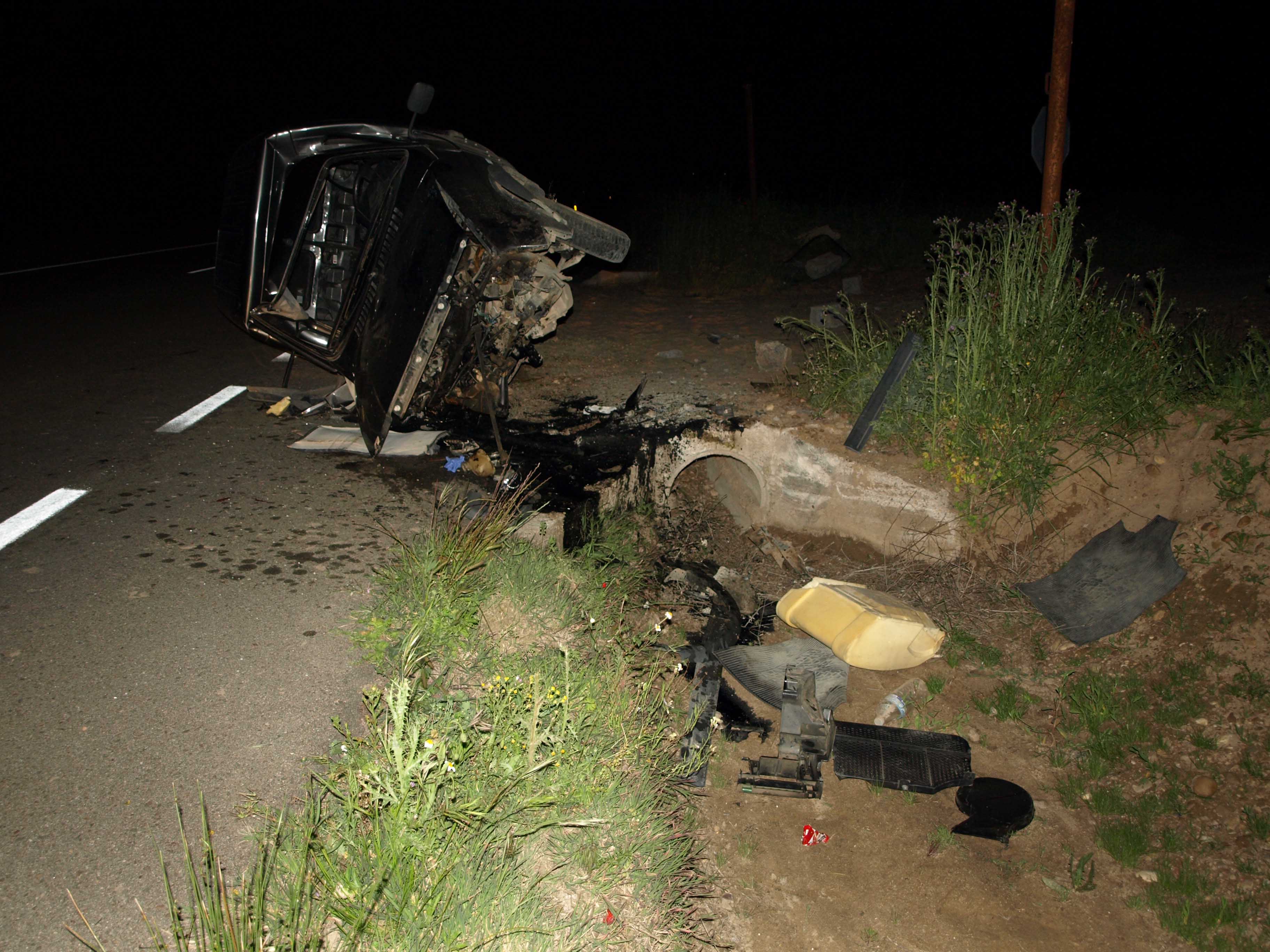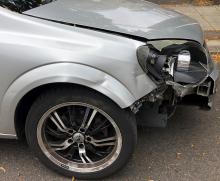Drink-drive enforcement still has issues in Europe, according to pan-European police body TISPOL
Drink-driving is the cause of around 5,000 road deaths in Europe. In the UK alone, it is estimated that 230 (14%) of the country’s 1,713 road deaths are due to drinking and driving.
For England, Wales and Northern Ireland the limit for driving is still 80mg (0.8) of alcohol/100ml of blood. Scotland reduced its limit to 50mg (0.5) of alcohol/100ml of blood in December 2014, bringing it into line with most

Police organisation TISPOL: never drink and drive
Drink-drive enforcement still has issues in Europe, according to pan-European police body 4753 TISPOL
Drink-driving is the cause of around 5,000 road deaths in Europe. In the UK alone, it is estimated that 230 (14%) of the country’s 1,713 road deaths are due to drinking and driving.
For England, Wales and Northern Ireland the limit for driving is still 80mg (0.8) of alcohol/100ml of blood. Scotland reduced its limit to 50mg (0.5) of alcohol/100ml of blood in December 2014, bringing it into line with most European countries.
Crash data shows that for every six drivers who die in the UK while driving under the influence of alcohol (DUI), one of the drivers has an alcohol level below the 0.8 limit. The situation with drink-driving limits and the effects of different types of alcohol on the body when driving may be confusing for drivers.
TISPOL suggests that drivers should never drink when driving. There are also emerging concerns of drug and alcohol addictions among drivers and the increase of women drivers and alcohol.
A recent poll found only 3% of drivers in Great Britain knew the limit, let alone what amounts they could drink and stay within the drink-driving limit. The data in Scotland since the reduction shows a marked reduction in drinking and driving.
But unfortunately, there is a “patchwork” of alcohol limits across the1116 European Union. The majority of countries use the 0.5 limit, but countries such as Sweden have a 20mg (0.2) of alcohol/100ml of blood - effectively a zero-limit - for novice and professional drivers. It was stated that unless the 0.8 limit is reduced in line with other European countries, 25 people will die and 100 will be seriously injured each year in England. In the UK, rehabilitation courses for repeat drink-drivers have proved successful.
Among European countries, 15 have introduced alcolocks and there is an EU driving licence code number, 69, that shows if a driver must have an alcolock in the vehicle. The EU is also considering that new vehicles must be fitted with alcolock technology.
The1197 European Transport Safety Council – ETSC - recommends a reinforcement of drink-drive limits across Europe. The issue of drink-driving is made worse by cuts in resources for police enforcement measures.
Data from the Nordic countries shows that tough penalties and enforcement help cut the crash rate. In Sweden, around a quarter of road deaths are caused by drinking and driving, but the rate is gradually declining. However, the number of people getting behind the wheel while under the influence of drugs appears to be on the increase. Police carry out frequent random road checks and there has been strong political will for better driver education as well as the use of alcohol interlock systems for a number of years.
Alcolocks are used in 95% of buses in Sweden, while alcolock programmes are used for repeat offenders with the costs borne by the offender. Norway was the first county in the world to introduce a drink-drive limit in 1936, 0.5. Alcohol is very expensive due to high taxation and only available from State-owned monopoly liquor shops, but large quantities are brought in from abroad.
In 2014 there were 147 road deaths in Norway but still 22% of road deaths are due to alcohol and 14% to drugs. The Norwegian authorities recognise that alcolock programmes need to be implemented for the highest blood alcohol levels and by the start of 2016 all buses will be fitted with alcolocks.
In Finland, alcolocks have been in use for 10 years, while 20% of road deaths and 10% of serious injuries are caused by DUI.
Meanwhile, according to data analysed by research centre Continental Autocarro, there have been positive changes in the number of road crashes as well as casualty statistics in Italy and the Netherlands. Continental Autocarro looked at data provided by AISCAT - Association of Toll Motorways and Tunnels Operators which gathers and represents Italian concessionary companies
For Italy, the long-term trend is positive, although this may have been influenced by recession. Data reveals that commercial vehicle traffic fell by 11.2% on Italian highways between 2006 and the first half of 2015.
In the same period, the number of crashes on highways and involving commercial vehicles dropped by 35.3%. But between 2013 and the first half of 2015, commercial vehicle traffic rose by 3.3%, while the number of crashes also rose by 15.8%. Overall, crashes have dropped.
For the Netherlands, the results are negative. The total number of severe injuries in traffic crashes increased from 18,800 in 2013 to 20,700 in 2014, according to the Dutch Ministry of Infrastructure and Environment. More data is being gathered and analysed to determine the reason behind the increase. The aim is to reduce the total number of severe injuries caused by traffic crashes to 10,600 in 2020.
Drink-driving is the cause of around 5,000 road deaths in Europe. In the UK alone, it is estimated that 230 (14%) of the country’s 1,713 road deaths are due to drinking and driving.
For England, Wales and Northern Ireland the limit for driving is still 80mg (0.8) of alcohol/100ml of blood. Scotland reduced its limit to 50mg (0.5) of alcohol/100ml of blood in December 2014, bringing it into line with most European countries.
Crash data shows that for every six drivers who die in the UK while driving under the influence of alcohol (DUI), one of the drivers has an alcohol level below the 0.8 limit. The situation with drink-driving limits and the effects of different types of alcohol on the body when driving may be confusing for drivers.
TISPOL suggests that drivers should never drink when driving. There are also emerging concerns of drug and alcohol addictions among drivers and the increase of women drivers and alcohol.
A recent poll found only 3% of drivers in Great Britain knew the limit, let alone what amounts they could drink and stay within the drink-driving limit. The data in Scotland since the reduction shows a marked reduction in drinking and driving.
But unfortunately, there is a “patchwork” of alcohol limits across the
Among European countries, 15 have introduced alcolocks and there is an EU driving licence code number, 69, that shows if a driver must have an alcolock in the vehicle. The EU is also considering that new vehicles must be fitted with alcolock technology.
The
Data from the Nordic countries shows that tough penalties and enforcement help cut the crash rate. In Sweden, around a quarter of road deaths are caused by drinking and driving, but the rate is gradually declining. However, the number of people getting behind the wheel while under the influence of drugs appears to be on the increase. Police carry out frequent random road checks and there has been strong political will for better driver education as well as the use of alcohol interlock systems for a number of years.
Alcolocks are used in 95% of buses in Sweden, while alcolock programmes are used for repeat offenders with the costs borne by the offender. Norway was the first county in the world to introduce a drink-drive limit in 1936, 0.5. Alcohol is very expensive due to high taxation and only available from State-owned monopoly liquor shops, but large quantities are brought in from abroad.
In 2014 there were 147 road deaths in Norway but still 22% of road deaths are due to alcohol and 14% to drugs. The Norwegian authorities recognise that alcolock programmes need to be implemented for the highest blood alcohol levels and by the start of 2016 all buses will be fitted with alcolocks.
In Finland, alcolocks have been in use for 10 years, while 20% of road deaths and 10% of serious injuries are caused by DUI.
Meanwhile, according to data analysed by research centre Continental Autocarro, there have been positive changes in the number of road crashes as well as casualty statistics in Italy and the Netherlands. Continental Autocarro looked at data provided by AISCAT - Association of Toll Motorways and Tunnels Operators which gathers and represents Italian concessionary companies
For Italy, the long-term trend is positive, although this may have been influenced by recession. Data reveals that commercial vehicle traffic fell by 11.2% on Italian highways between 2006 and the first half of 2015.
In the same period, the number of crashes on highways and involving commercial vehicles dropped by 35.3%. But between 2013 and the first half of 2015, commercial vehicle traffic rose by 3.3%, while the number of crashes also rose by 15.8%. Overall, crashes have dropped.
For the Netherlands, the results are negative. The total number of severe injuries in traffic crashes increased from 18,800 in 2013 to 20,700 in 2014, according to the Dutch Ministry of Infrastructure and Environment. More data is being gathered and analysed to determine the reason behind the increase. The aim is to reduce the total number of severe injuries caused by traffic crashes to 10,600 in 2020.





